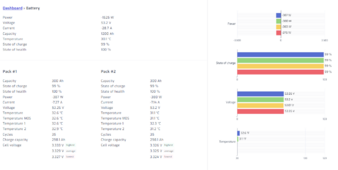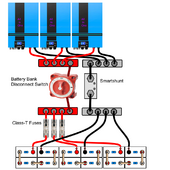Hello everyone.
I have a question here.
I have 2 banks of lifepo4 batteries. They are 280ah. It's a 16 cell. I have a 48v system. I have JK BMS. I want to order 16 cell more. If I order 304ah this time. How would it work? Can it work? Since the controllers are set to stop charging at a certain voltage. So of the 2 banks that are 280 ah are at the top level it will indicate the controllers to stop the charge. So what happens to the 304 ah battery bank?
I have a question here.
I have 2 banks of lifepo4 batteries. They are 280ah. It's a 16 cell. I have a 48v system. I have JK BMS. I want to order 16 cell more. If I order 304ah this time. How would it work? Can it work? Since the controllers are set to stop charging at a certain voltage. So of the 2 banks that are 280 ah are at the top level it will indicate the controllers to stop the charge. So what happens to the 304 ah battery bank?




